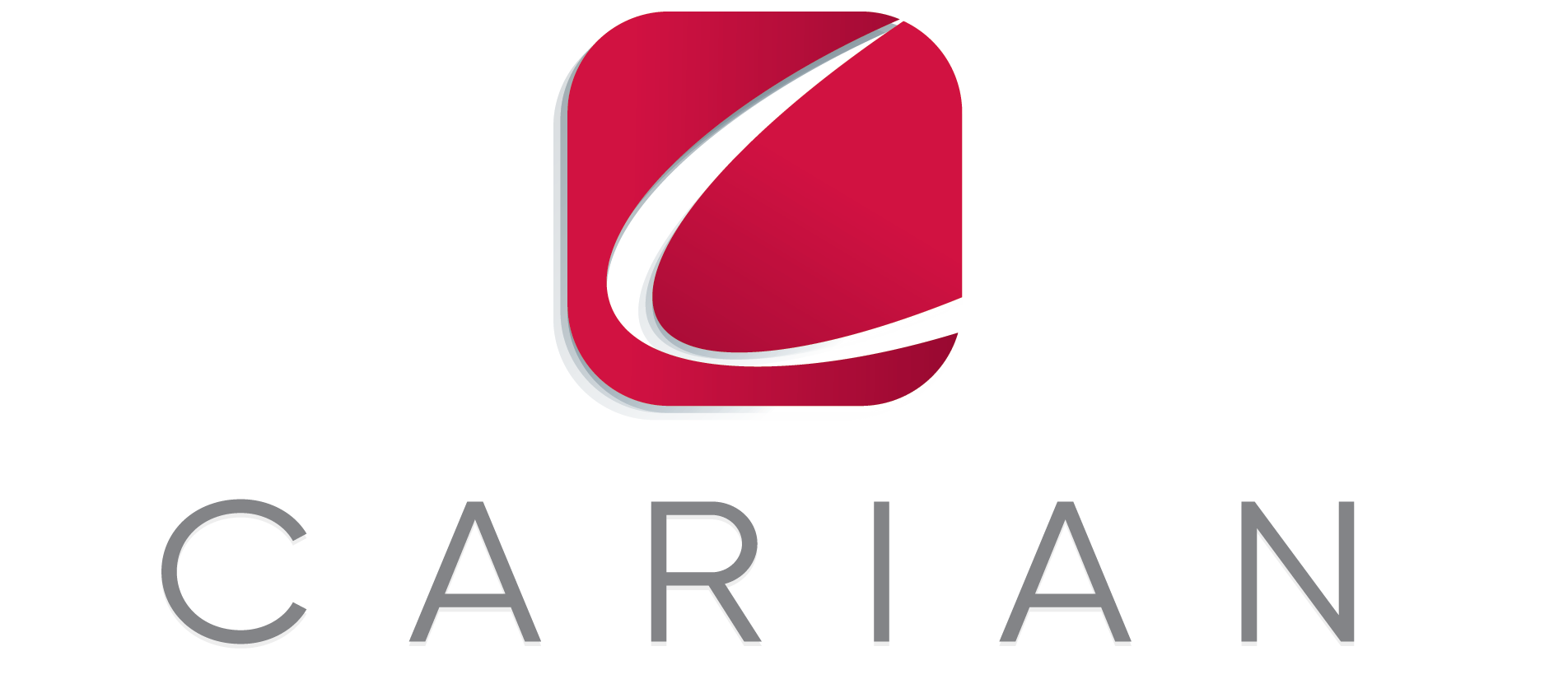Closing the Execution Gap: A Framework for Utility Capital Program Delivery Excellence
EXECUTIVE BRIEF
CARIAN White Paper • Q4 2025
This executive brief was developed by CARIAN, a purpose-driven power advisory and execution firm dedicated exclusively to the utility sector.
The Challenge
U.S. investor-owned electric utilities project $202.8 billion in capital expenditures by 2026.[1] Yet large capital projects across industries experience cost overruns averaging 79% and schedule delays of 52%.[2]
The utility sector faces a compounding problem: not only do programs systematically underperform, but utilities lack the rigorous performance measurement and delivery model benchmarking that would enable evidence-based improvement. The industry operates with critical data gaps that obscure execution challenges and limit optimization.
Critical Findings
No utility-specific data exists for:
- Delivery model performance comparisons (independent PM vs. integrated EPC)
- Peak versus average workforce staffing impacts on program outcomes
- Constructability review ROI with documented claims avoided
- Safety performance differences between delivery models
- Design-construction interface failure costs
- Digital controls effectiveness in variance detection
- Regulatory approval correlation with reporting discipline
Available evidence from other sectors suggests significant improvement potential:
- Collaborative delivery models: 15-18% cost and schedule improvement[2]
- Constructability reviews: $10 return per dollar invested[6]
- Digital controls: 60% faster response to critical issues[10]
- TRIR-based safety evaluation: measurably lower incident rates[8]
On $202.8 billion projected annual capital expenditure, a 10% variance reduction represents over $20 billion in value preservation.[1]
The Four-Pillar Execution Framework
Pillar One: Integrated Program Management
The Problem: As programs scale beyond $1 billion, fragmentation becomes the default. Owners divide work into dozens of contracts believing this spreads risk. The result: accountability diffuses, interfaces multiply, and no single view of program health exists.
The Solution: Consolidate management authority under one empowered program leader with unified oversight across all delivery partners. Independent program management separated from design and construction execution creates structural conditions for objective forecasting and transparent variance reporting.
Key Outcomes:
- One accountable voice to executives, boards, and regulators
- Integrated baseline preventing aggregated contractor optimism
- Clear performance attribution rather than forensic contract interpretation
Pillar Two: Capacity Planning for Peak Complexity
The Problem: Programs fail in Year 3 when workload peaks but staffing remains sized for average annual capital. Engineering teams face 90% design completion workload with 50% capacity. Owner oversight staff confront double the volume with unchanged headcount. Performance collapses not from strategy failure but capacity planning sized to averages rather than peaks.
The Solution: Model full program lifecycle workforce requirements before mobilization. Deploy capacity 6-12 months ahead of demand peaks. Maintain leadership continuity from Year 1 through closeout.
The Reality: The utility sector must recruit 312,300 new individuals over six years (nearly 50% of current workforce).[4] Yet only 34% of leaders feel prepared to manage workforce risks.[5] Proactive capacity planning addresses this structural constraint.
Key Outcomes:
- Sustained performance through complexity peaks
- No Year 3 capacity cliff driving schedule slippage
- Knowledge preservation across program lifecycle
Pillar Three: Field Execution Discipline
The Problem: Billion-dollar programs succeed or fail in the field across hundreds of sites and thousands of tasks. When constructability isn’t validated during design, outage coordination fails to account for operations realities, safety standards vary across contractors, and materials arrive late, field execution breaks down predictably.
The Solution: Embed construction managers in design development before freeze. Enforce uniform safety standards with daily oversight across all contractors. Integrate outage planning, procurement tracking, and vegetation management with construction sequencing.
The Evidence: Kentucky Transportation Cabinet documented 1.25% project budget savings from constructability reviews by comparing change orders on reviewed versus non-reviewed projects.[7] No utility-specific examples exist, reflecting the sector’s measurement gap and improvement opportunity.
Key Outcomes:
- Designs validated for field constructability before mobilization
- Claims prevention through early interface management
- Superior safety performance across all work fronts
Pillar Four: Controls and Digital Transparency
The Problem: At billion-dollar scale, spreadsheet-based management reaches catastrophic failure. Variance reports arrive weeks old. Risk registers exist as static documents rather than dynamic tools. Boards lose confidence not because programs fail but because reporting cannot prove they succeed.
The Solution: Deploy integrated controls platforms from program mobilization with real-time executive dashboards. Calculate earned value metrics regularly. Implement formal change control and predictive analytics flagging risks before they materialize.
The Performance Impact: Programs with integrated controls reduce cost variance from industry norms of 12-15% to 5-6% ranges. Earlier variance detection enables intervention while corrective options remain available and less costly.[2]
Key Outcomes:
- Real-time portfolio visibility without manual reconciliation
- Early warning indicators before variances become irreversible
- Confident executive decision-making based on current data
How the Pillars Work Together
These pillars are interdependent:
Integrated Program Management creates the governance structure enabling coordinated execution. Without it, capacity planning, field discipline, and controls operate in silos.
Capacity Planning for Peak Complexity ensures the program team has sufficient bandwidth to maintain discipline when workload peaks. Without it, even strong structures collapse under volume.
Field Execution Discipline validates that plans translate into reality. Without it, program management becomes reporting theater disconnected from actual delivery.
Controls and Digital Transparency provide the data making decision-making confident and stakeholder communication credible. Without it, even well-executed programs struggle to prove performance.
Remove any pillar and the entire system weakens.
Strategic Implications
The Dual Challenge
The utility sector faces interconnected challenges: programs systematically underperform (79% cost overruns, 52% schedule delays), yet utilities lack the performance measurement enabling evidence-based improvement. Without quantified understanding of which delivery approaches work, which capacity models succeed, which field practices prevent claims, or which controls enable forecast accuracy, the industry continues relying on fragmented traditional approaches producing systematic underperformance.
Building the Evidence Base
Utilities implementing the four-pillar framework can establish the rigorous measurement discipline the sector currently lacks:
- Document baseline performance before implementing changes
- Track comparative performance across delivery models
- Correlate workforce planning approaches with program outcomes
- Quantify constructability review impacts on claims and savings
- Measure variance detection speed improvements from digital controls
- Link reporting discipline to regulatory approval rates
The Competitive Imperative
Transmission corridors exceeding $10 billion, nuclear programs approaching $30 billion, and grid modernization portfolios in the tens of billions will test organizational delivery capacity at unprecedented scale. Each faces unforgiving accountability: Did it deliver on budget? On schedule? As promised?
Utilities that successfully navigate this environment will build integrated execution discipline across all four pillars, establish rigorous measurement systems enabling evidence-based continuous improvement, and develop institutional capability in program management recognizing that portfolio orchestration requires different skills than individual asset delivery.
The CARIAN Approach
CARIAN built its organization around these four pillars based on founders’ 20+ years leading utility capital programs. Our approach reflects direct experience with fragmented delivery consequences, reactive capacity planning failures, field execution gaps, and inadequate controls.
Integration without conflicts: As a pure-play Power Advisory & Execution partner with no construction contracting business, we orchestrate multiple delivery partners without competing for their work scope.
Capacity sized for peak complexity: Teams dimensioned for maximum program demand, staffed with power sector veterans carrying institutional knowledge across full program lifecycles.
Field discipline embedded from design: Construction managers participate in design development, ensuring constructability, safety, and coordination requirements are validated before commitments.
Digital transparency as infrastructure: Integrated controls systems providing real-time portfolio visibility deployed from program mobilization, not added reactively.
We measure success the way our utility clients do: cost discipline sustained across multiple years, schedule certainty maintained through complexity peaks, safety performance protecting workers and the public, and stakeholder confidence earned through transparent, accountable execution.
Conclusion
Billion-dollar capital programs demand operational discipline across four dimensions simultaneously. Miss any pillar and the program becomes vulnerable to systematic underperformance plaguing large capital projects across industries.
The measurement gaps documented throughout this research need not persist. Utilities implementing rigorous execution frameworks can establish the performance benchmarks the sector currently lacks. This requires commitment to measurement discipline as fundamental as commitment to safety or reliability.
Programs that deliver predictably create regulatory confidence enabling future capital deployment. Programs that struggle erode stakeholder trust requiring years to rebuild. In an era where capital demands will only intensify, execution discipline is not overhead to be minimized. It is foundation enabling everything else.
The playbook exists. The evidence supports it. The question: Will utilities build the organizational discipline these programs require?
Key References
[1] Edison Electric Institute. (2024). “Industry Capital Expenditures.”
[2] McKinsey & Company. (2023). “Seize the decade: Maximizing value through pre-construction excellence.”
[4] Marsh. “Utilities Workforce Resilience: Addressing the Talent Gap.”
[5] PrismForce. “Workforce Capacity Planning.”
[6] March Associates. (2023). “Why a Constructability Review is Key to Commercial Real Estate Development Success.”
[7] University of Kentucky, College of Engineering. “Constructability Review Benefits Analysis.”
[8] Construction Institute. “Safety Performance Metrics in Project Evaluation.”
[10] DataRoars. “The Battle of Productivity: Excel vs Real-Time Dashboards.”
© 2025 CARIAN. All rights reserved.




